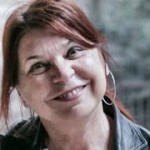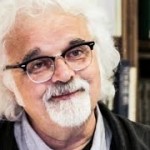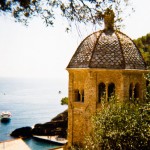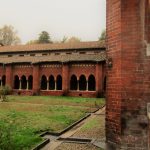Spaghetti bolognaise don't exist!
Milan: Chiaravalle Abbey
A great place to discover on the outskirts of Milan
Here we are at Chiaravalle Abbey, on the outskirts of Milan. The monastery, situated in the area of Parco Agricolo Sud Milano, was built by the Milanese authorities in around 1150 and donated to the French St. Bernard of Clairvaux.
At that time this land was just marshland and was worth nothing, but the monks built this place of worship and farming. Today the monastery is home to 14 monks, who follow the rule of St. Benedict and keep the Cistercian traditions.
Chiaravalle Abbey is also known to be the place where Guglielma, “the Bohemian”, used to live. She was a laic nun known for her thaumaturgic powers, that led spontaneously to the formation of the religious movement known as the Guglielmiti.
⇒ Watch the full web serie Milan & Leonardo da Vinci
Cover pic courtesy of Flickr User Luca Terzaroli
Visit Chiaravalle Abbey official website and book your guided tour
Visit Turismo Milano official website
Video full text: Chiaravalle Abbey
The bell tower of Chiaravalle Abbey,
here on the outskirts of Milan.
When this land was given to St. Bernard of Clairvaux,
it was just marshland and was worth nothing,
but the monks built this place of worship and farming,
here on the outskirts of Milan.
But before taking a tour of the Abbey, we’re popping into the ARCI (Italian Recreational and Cultural Association) café in Chiaravalle.
“The Labourers’ Trade Union” with the ears of corn.
These are the signs of a past that consisted of hard labour in the fields
and the social victories of farm labourers in the countryside around Milan.
It’s no coincidence, therefore, that this is a very important agricultural area.
Let’s go and have a look at Chiaravalle Abbey.
This main entrance is really beautiful.
Hello!
Fr. Luciano is our special guide for our tour of Chiaravalle Abbey.
The monastery, situated in the area of Parco Agricolo Sud Milano,
was built by the Milanese authorities in around 1150,
and donated to Fr. Bernard, who came from France
to resolve the dispute between Pope Innocent and the Antipope, Anacletus.
Fr. Bernard’s diplomatic intervention put an end to a war
that was impoverishing the city of Milan.
He then decided to pay off his debts by donating these lands to the Cistercian community.
Let me show you something really beautiful:
notice the magnificence of this architectural structure!
Today the monastery is home to 14 monks,
who follow the rule of St. Benedict and keep the Cistercian traditions.
Where does the word Cistercians come from?
From Cîteaux, Cistercium, the location in France, where the first monastery was.
When the Cistercians arrived here,
this countryside was in too poor a state to be farmed.
For an order that made work one of its main activities,
the obstacles appeared enormous.
Pools of water and marshes can pose difficulties for an area,
but if one manages to use the waters well, then they become a valuable resource.
Thanks to the monks’ reclamation of the land and to their hydraulic works,
the local economy began to flourish.
When it came to controlling the waters the Cistercians were professionals:
they created the water-meadows, an irrigation system
that allowed them to harvest twice that of conventional farming methods.
A huge quantity of bovine milk had to be transformed into a long-lasting product.
And that led to Grana Padano cheese first being produced here in Chiaravalle Abbey.
You don’t say? Really?
I believe that it was with the water-meadows that the Cistercians paved the way for modern agriculture.
This is the Chapter house,
where the monks would gather, following morning praise.
They would read a chapter from the Rule of St. Benedict and exchange information.
This lectern was in the middle of the choir in church.
In those times the monks used to read from these huge books.
Fr. Luciano takes me into the heart of the abbey. It’s really beautiful!
The church was consecrated in 1221.
I am astounded by the position of the choir, it’s usually in the apse.
This is the Cistercian way:
when reciting the psalms, a verse is usually alternated with a sung chorus.
This is Manzù, male on one side, female on the other, an angel.
Chiaravalle Abbey’s most famous work dates from the year 1512.
This Madonna della Buonanotte (Madonna of Good Night) accompanied the monks as they went to their beds.
They would bid a final farewell to this Madonna by Bernardino Luini.
A Madonna with child, and two angels playing instruments.
The monastery of Chiaravalle forms part of the itineraries of Parco Agricolo Sud Milano.
In addition to tourism, it also has another objective:
since 2009 we have been running this place in order to transform it into a hub of learning for sustainability.
We organise activities and educational workshops for children and schools,
and for adults as well.
You are the new Cistercians!
In addition to the original mill, inside the abbey,
there is still a space that is an important symbol of monastic life:
the garden-vegetable plot for medicinal herbs.
It was a major resource for a healer, Guglielma, known as the Bohemian.
Guglielma was like a nun, but she was a member of the laity,
who came here, and followed the rule of St. Benedict.
A female living in the abbey was something quite exceptional.
Guglielma became so well-known for her thaumaturgic powers,
that it led spontaneously to the formation of the religious movement known as the Guglielmiti,
that drew many women from Milan’s aristocracy.
Following her death in 1282,
the monks of Chiaravalle decided to bury her inside the abbey.
They dedicated a chapel and an altar to her, that became the destination for thousands of pilgrims and worshippers.
She was acknowledged as being the female reincarnation of the Holy Spirit.
The inquisition, at the beginning of the 14th century, condemned the worshiping of Guglielma.
Firstly, they violated her remains,
removing and burning the bones of the Bohemian.
She was estranged, almost to the point of heresy.
Then, many of Guglielma’s devotees and followers were tortured,
some were burned at the stake, as heretics.
For the Cistercians the abbey is essential for promoting religion from a female perspective.
A transition from the Old to the New Testament.
From the part of Abraham’s law, that was rough and male, to the female part brought to us by Jesus.
The legend of the Bohemian persists,
and it would appear that she is behind the image of the woman Pope in the Tarot cards.
What a story!
A fatherly embrace.
Visit Milan: helpful hints
Italian name: Milano
Arrival
Milan has got three airports:
- Malpensa Airport is the largest international & intecontinental Airport in Northern Italy. 30 miles Northwest from the city centre. Connections:
→ Train Malpensa Express: trains leaves every 30 minutes in each direction, connecting the Airport to Milan Grand Central Station or Cadorna Railway Station. Terminals 1 and 2. It takes 45 min, price: 14 €
→ Shuttle Bus: Malpensa Shuttle and Malpensa Bus Express connect the airport to Milan Grand Central Railway Station and Milan’s Underground Network. Terminals 1 and 2. It takes 60/70 min, price: 8 € - City Airport Linate is an international airport connecting Milan with main European cities, located just 4 miles from the city centre. Connections by shuttle: Atm Bus n. 73 from Milano Duomo M1 – M3 (Piazza Diaz, direction: San Babila), first ride at 5.35 am, last one at 00.35. Frequency: every 10 min, price 1,5 €
- Milan Bergamo Airport Orio al Serio is mainly low cost flights Airport, located 30 miles Northwest from Milan. Connections only by Shuttle: There are 4 different bus companies, pricing changes from 5 up to 8 €
Transports
ATM is Milan public transport service both for bus, tram and subway. Single ticket costs 1.50€ for 90-min ride. Consider daily/weekly subscriptions. You can buy tickets also texting to 48444. Milan Subway is the longest in Italy, covering 95 km: Donwload and check the map.
Moving in town can be nice also by bike: Milan has got a powerfull bike sharing service providing both regular and e-bikes. Here is the experience of our Ambassador Kim Harding with BikeMi service and a useful video of our Ambassador Roxana explaining how does it work. Car Sharing is also good with many different companies to choose.
Try also the local urban railway train, called Passante Ferroviario, check the experience of our Ambassador Roxana Iacoban travelling by local train in town.
What to do in Milan
Milan is the Italian financial center and one of the European capitals of Fashion. Known for its nightlife as well.
Some tips on Italia Slow Tour: watch our web serie about Leonardo da Vinci’s places, climb on top of the Duomo, visit Prada Foundation, Museums and Art Galleries, taste some fine gelato and try the local Aperitivo and – not joking – enjoy a sailing trip (!!) or some time deep in the nature close to some actual farms and fields.
Where to sleep
Accomodations are quite expensive in Milan, fares rise up and hotels get full according to the rich event calendar of the city (see: Fashion Week, Salone del mobile, Big concerts, Theatre and Sport events, etc.). If you are not specifically interested in any of those, try to travel during other periods to save some money.
Italia Slow Tour recommends:
- Hotel Cervo in Garibaldi District if you want to stay close to city centre and enjoy the nightlife
- Hotel Concorde located on the Green Way Milan-Lecco to Lake Como, if you want to move around adn travel by bike
Shopping in Milan
The famous Fashion District involves the following streets/areas: Via Montenapoleone, via Manzoni, via della Spiga and Corso Venezia. The so called “Quadrilateral of Fashion”. Here you can find all kind of brands and shops. Easy to reach by Subway (stop at Montenapoleone station).
Don’t miss the Street Markets! Almost every day you can find one: best are the ones in Viale Papiniano (on Tuesday) and Via Fauchè (on Saturday). More on the official website of weekly street markets. If you are into sustainable local products, Milan has got 8 actual farms in town and a green Earth Market.
If you are interested in Outlet Shopping, in the outskirt of Milan you can find 4 different Fashion Outlets, in a radius of 62 miles. Here you can find everyday a lot of famous high quality Italian brands on sale, with prices cut off up to 50%. All the outlets are connected to the center of Milan by Shuttle Bus:
- Serravalle Designer Outlet – Shuttle departure from Milan Central Station or Cairoli square
- Fidenza Village Outlet Shopping – Shuttle departure from Piazza della Repubblica 5, at the corner with Turati st.
- Vicolungo The Style Outlets – Shuttle departure from Cairoli square
- Rodengo-Saiano Franciacorta Outlet Village – Shuttle departure from Cairoli square














